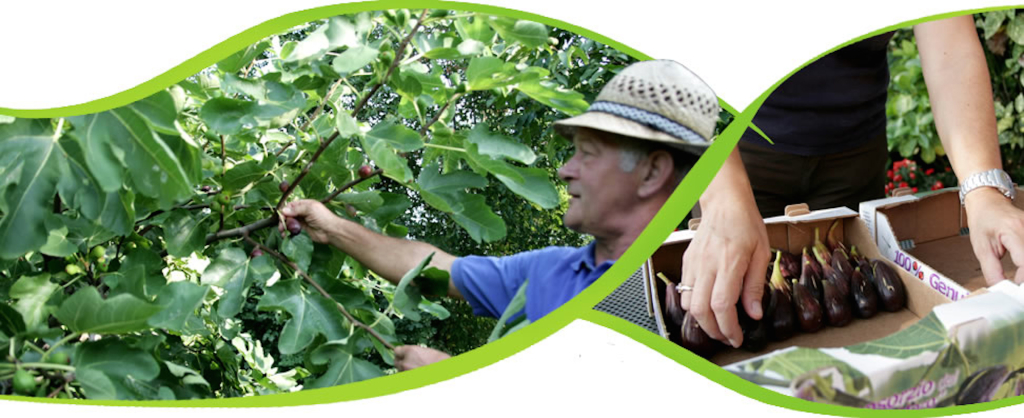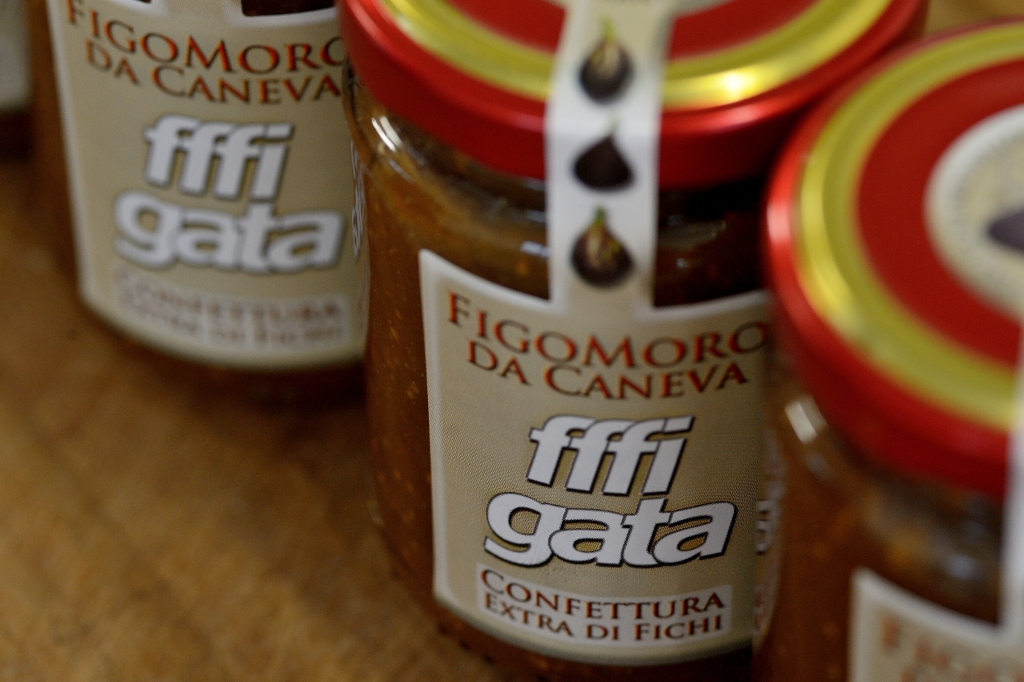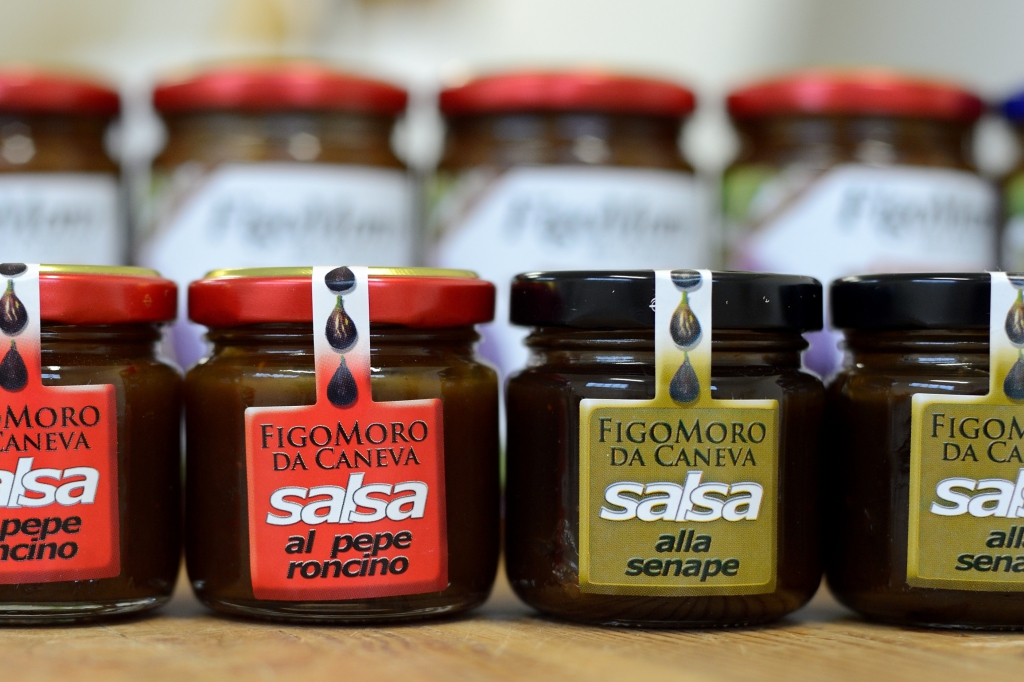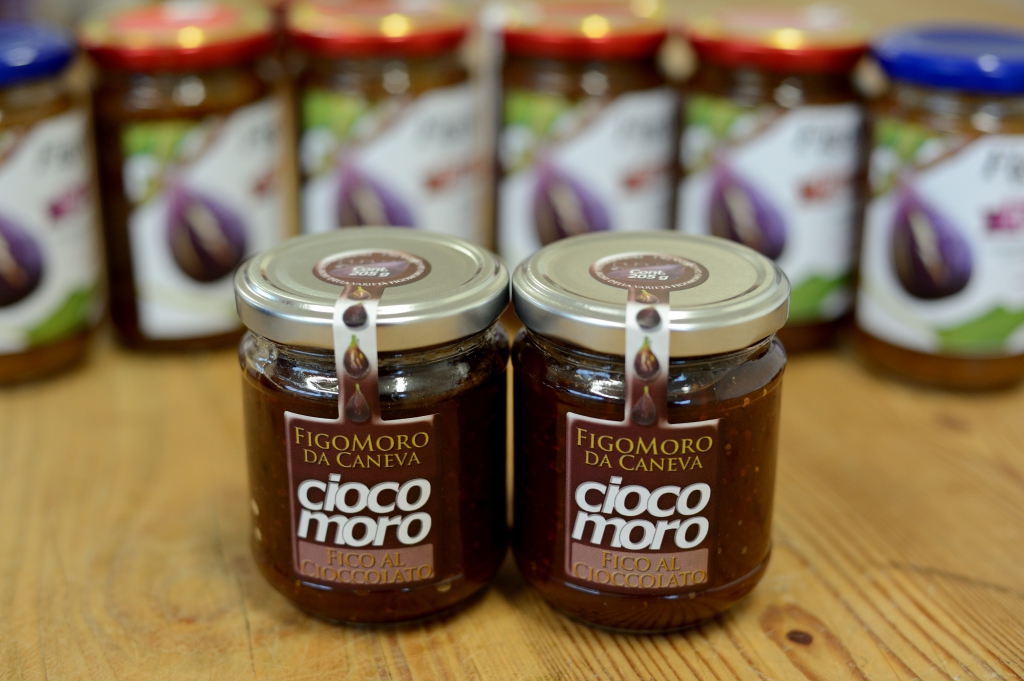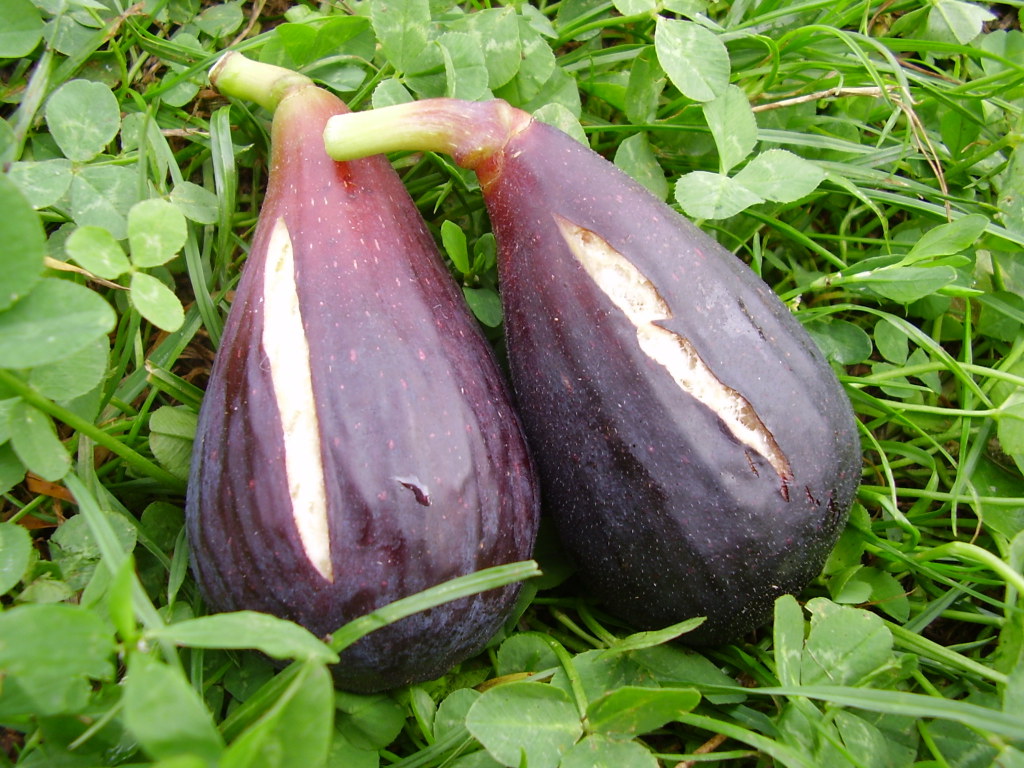 It is sweet, fresh, characterized by an intense flavour and a powerful scent. The ‘FigoMoro of Caneva’ is grown in the heart of the Friuli region, and it is considered the tastiest among the figs produced in the Mediterranean. It is the base for the production of many products, such as sauces, liqueurs, compotes, preparations for cooking and pastry.
It is sweet, fresh, characterized by an intense flavour and a powerful scent. The ‘FigoMoro of Caneva’ is grown in the heart of the Friuli region, and it is considered the tastiest among the figs produced in the Mediterranean. It is the base for the production of many products, such as sauces, liqueurs, compotes, preparations for cooking and pastry.
The FigoMoro, which in the past was a local and autochthonous product, is now also known in Europe. Its colour ranges from green to purplish-black, as its ripening increases, its peel tends to become softer and subtler, so that it is very easily spoilt. Because of this concentration in sugars on its peel, too, the FigoMoro of Caneva should be eaten with its peel, because here particular tastes are present. In addition to the inviting and always glossy colour of its peel, the inner pulp shows the superior quality of this fig. It is tender and very tasty, characterized by an intense red colour which contrasts with the white of the part below the peel. It shows an incredibly intense scent at the time of its ripening. It is considerably sweeter and characterized by better quality in comparison with other varieties of figs. It is appreciated both fresh, and preserved and processed.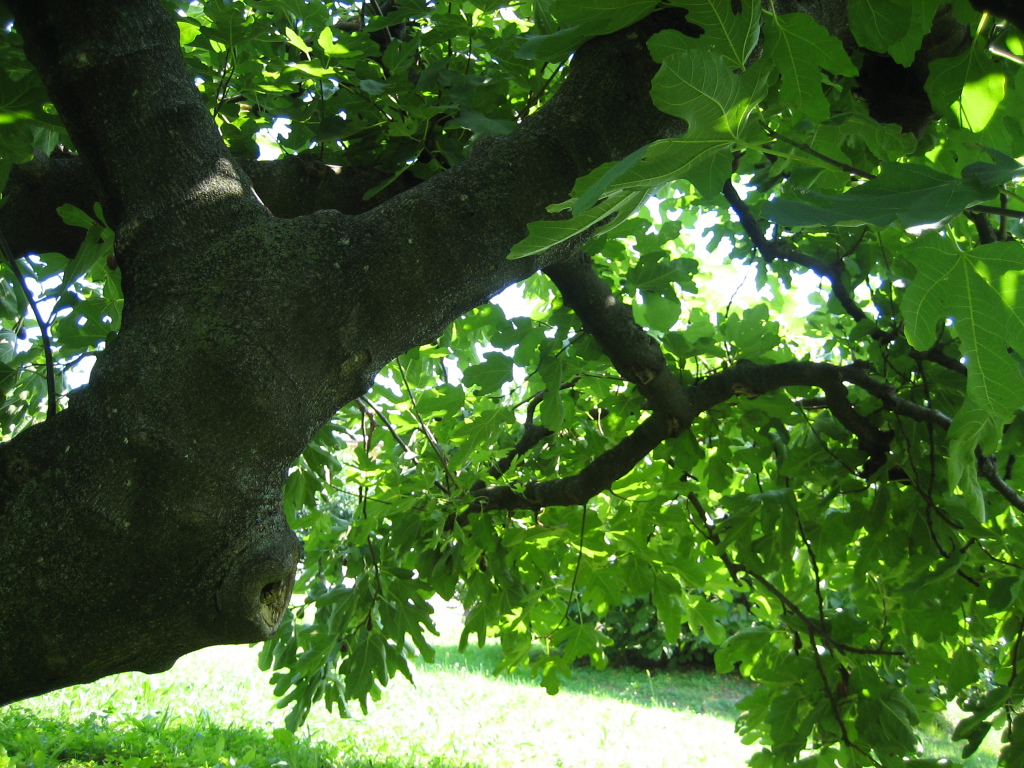
The FigoMoro and the history of Caneva
The agricultural area of Caneva is situated to the south of the plateau of Cansiglio, in the province of Pordenone. It has been an ideal habitat for human settlement since Neolithic times. It was also one of the first towns to adopt four spinning mills, one of the first examples in Italy of industries mainly run by women.
The cultivation of the black fig, locally referred to as ‘FigoMoro’ (the Italian word ‘Moro’ means ‘dark-skinned’)’, has been widespread in the municipality of Caneva since ancient times. The special microclimate of this land, located close to the foothills of the Alps, the wealth in limestone and minerals in the subsurface, including much iron, the location of the plants, give the fruits of the area high quality and organoleptic characteristics. The first written records relating to FigoMoro date back to the fourteenth century, but especially during the time of ‘Serenissima Republic of Venice’. The FigoMoro was embarked on all ships of the Venetian fleet, in the form of dried fig. Fresh fruits and the products which derived from them were instead reserved for nobles.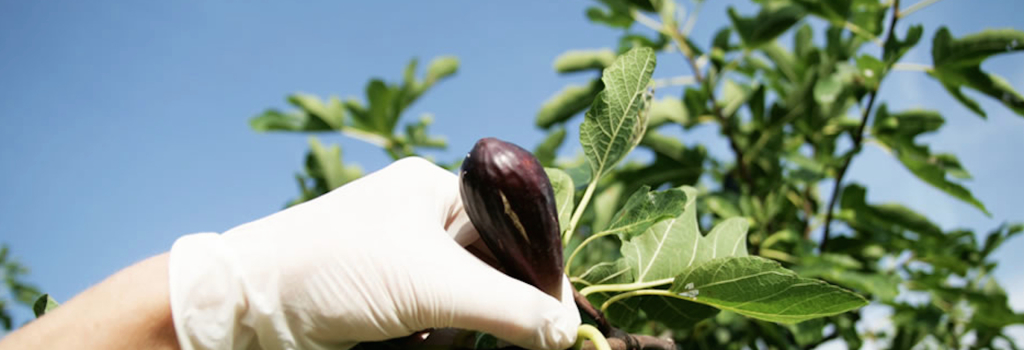
The many inviting aspects of FigoMoro
There are many products on the market prepared with the FigoMoro.
Jams are a true concentrate in flavour. They are prepared with one of the oldest recipes of Friuli, after five hours of very slow cooking. Extra jam is much appreciated. Its recipe was expressly designed for preserving the typical flavours of the fresh fruit.
Hot pepper sauce is unusual but delicious, ideal for flavouring stews, grilled meats, and roasts, but also excellent with fish courses and cheeses. The most recent specialty of FigoMoro is the sauce prepared with concentrate and mustard. It is appreciated by chefs for its versatility and unique flavour. The ‘Cioccofigo', is a specialty with dried fruits, dipped in pure chocolate. The ‘Canevoti’ are highly sought after: they are caramelized figs used in confectionery or in pairing with strong cheeses.
The goodness of the FigoMoro can be also enjoyed in the preparation for ice cream, available in kg 3 bags. The preparation for cooking is particular, but very versatile. It is sold in cans and it is an excellent base for risotto and pasta. It can add a special touch to first courses.
The two types of vinegar are very demanded by chefs. The ‘base’ one has a different taste, delicate, slightly sweet, and tempting which accompanies vinegar, the result of a processing made with care in order to get the most out of combined maceration. The ‘Aseo scuro’ is vinegar concentrated in barrels for at least two years and refined with fig caramel. The result is a product indicated not only for seasoning, but also for flavouring fish courses and delicate dishes.
The beer ‘Birra Fich’ is very followed by the consumers who appreciate superior quality beers. It is delicate, obtained from re-fermented figs, produced exclusively by a local brewery, with barley malt, spices, high fermentation yeast, and water of the springs of Livenza.
Finally, there is also concentrated caramel, prepared with fig sugars. The refinement of its flavour comes from the fact that from kg 100 of product, 8 litres are obtained. It is used in cooking, confectionery, but also in the production of ice cream, in order to enhance the flavour of the ice cream fig.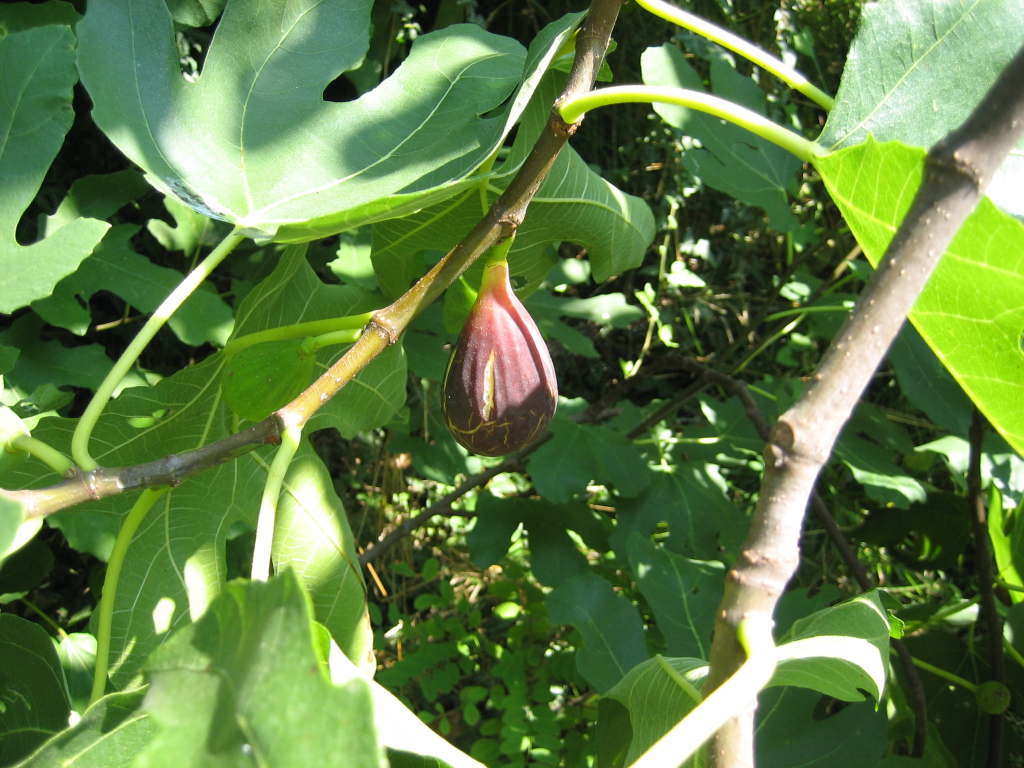
The numbers of the FigoMoro
Today the Consortium represents fifty members who together protect the quality and method of harvest, cultivation, and processing. The delicacy of the fresh product makes it marketable only to the neighbouring France, Germany, Austria and Switzerland, while the processed products are marketed all over Europe. The yearly production is of about 500 tons, of which about half are used for preparing processed products.
The elegance of sweetness
The fresh product is sold in special boxes, designed to ensure an aired, but safe position for figs. The boxes are always accompanied by the logo of the Consortium, which refers both to the intense colour of the ripe fruit and origin from the territory of Caneva.
Processed products have as protagonists both glass and modern labels, with bright colours, characterized by important colour contrasts.